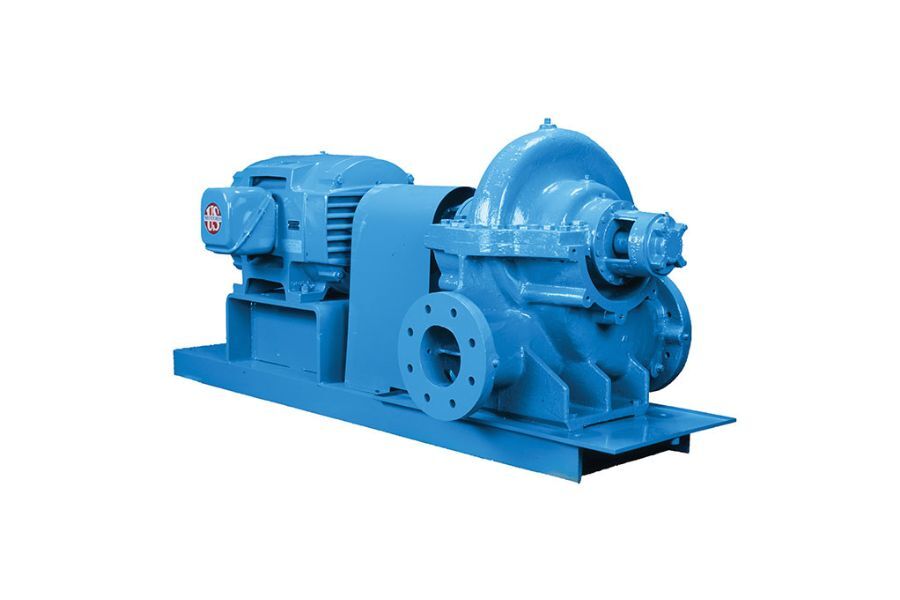
Choosing a Horizontal Split Case Pump Shouldn’t Be a Split Decision
For facilities that need to pump large quantities of low viscosity fluids at low to medium pressure, you can’t go wrong with a horizontal split case pump. That’s why they’re used in many industries around the world, especially municipal pump stations, wastewater treatment plants and cooling towers that pump water at constant pressure for long time periods.
However, like any equipment, horizontal split case pumps come with their own set of benefits and compromises. With this article, let’s take the guesswork out of choosing horizontal split case (HSC) pump.
Benefits of HSC pumps:
- HSC pumps generally have a smaller footprint than a similarly rated frame-mounted pump, and use minimal power.
- They generally have low maintenance costs. For example, it’s easy to inspect the rotor (without disturbing the driver or piping) by simply removing the top half of the casing.
- They usually have higher efficiencies (above 90%) than similar-sized frame-mounted pumps.
- Because the suction and discharge nozzles are situated next to each other in the bottom half of the casing (double suction impeller), while the impeller shaft is positioned between two bearings, they have superior net positive suction head required (NPSHR) and lower thrust loads. This between-bearings design lends itself to a short impeller shaft, resulting in low deflection.
- HSC pumps typically feature double volute casing, which minimises radial bearing loads.
- Seal suction pressure is sealed with the dual pump seals of the HSC pump.
Some issues around HSC pumps:
- Bearings and seals may have a reduced lifespan due to pressure on the impeller as fluid flows through the horizontal elbows on the pump’s suction side.
- The casing of the HSC pump results in limitations on the pump’s horsepower and pressure.
- The pump’s alignment, bearings and seals can become compromised over time, due to the fact that the upper and lower portions of the pump expand and contract at different rates with changes in temperature. Many manufacturers limit the maximum temperature range to 400 F to mitigate this risk.
- With two stuffing boxes that require two seals or sets of packing for each pump, this pump can increase costs. Many HSC models require specific stuffing box sizes as well, which means that standard or less expensive seals are often not an option.
- Some models of HSC pumps are sensitive to pipe strain.
- The HSC pump’s dual-suction design reduces the effective eye area, creating issues around the speed of suction. If the pump operates at any point other than its best efficiency point (BEP) there can be issues around recirculation and separation, causing damage to the impeller and increasing thrust loads.
- There can be issues with ring clearance – either the amount of clearance as the HSC pump opens up from wear, or differences in clearances from one side of the pump to the other. Clearances involving the impeller to casing (A and B gaps) are also a concern.
HSC pumps are fantastic for many applications where the industrial process works with thin fluids like water, particularly ones requiring high flow rates such as fire pumps, water distribution, pipelines, and cooling water.
If you keep in mind the concerns around HSC pumps, particularly when it comes to reduced bearing and seal life, temperature limitations, and potential issues with ring clearances, you should be able to make an informed decision about whether an HSC pump is the right choice. You can also read up on some of the common errors around installing and operating an HSC pump.
If you’re still splitting hairs about the details, give us a call on 1-800-367-4180 (toll-free) to discuss your options. As your industrial pump supplier in Canada, we’re here to help you choose, install, maintain, and monitor a variety of equipment. And to answer questions about things you’ve previously tried gone wrong.
